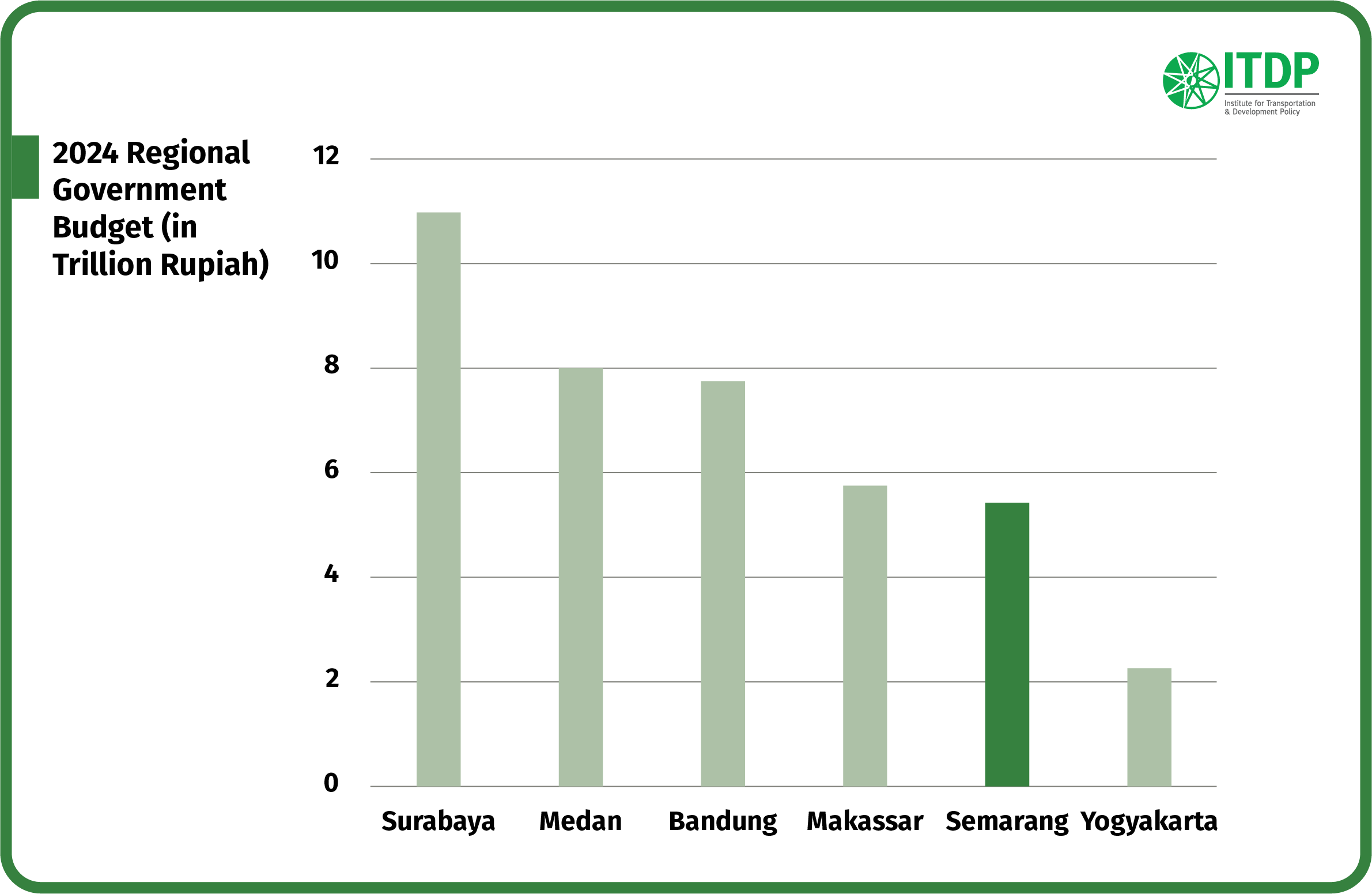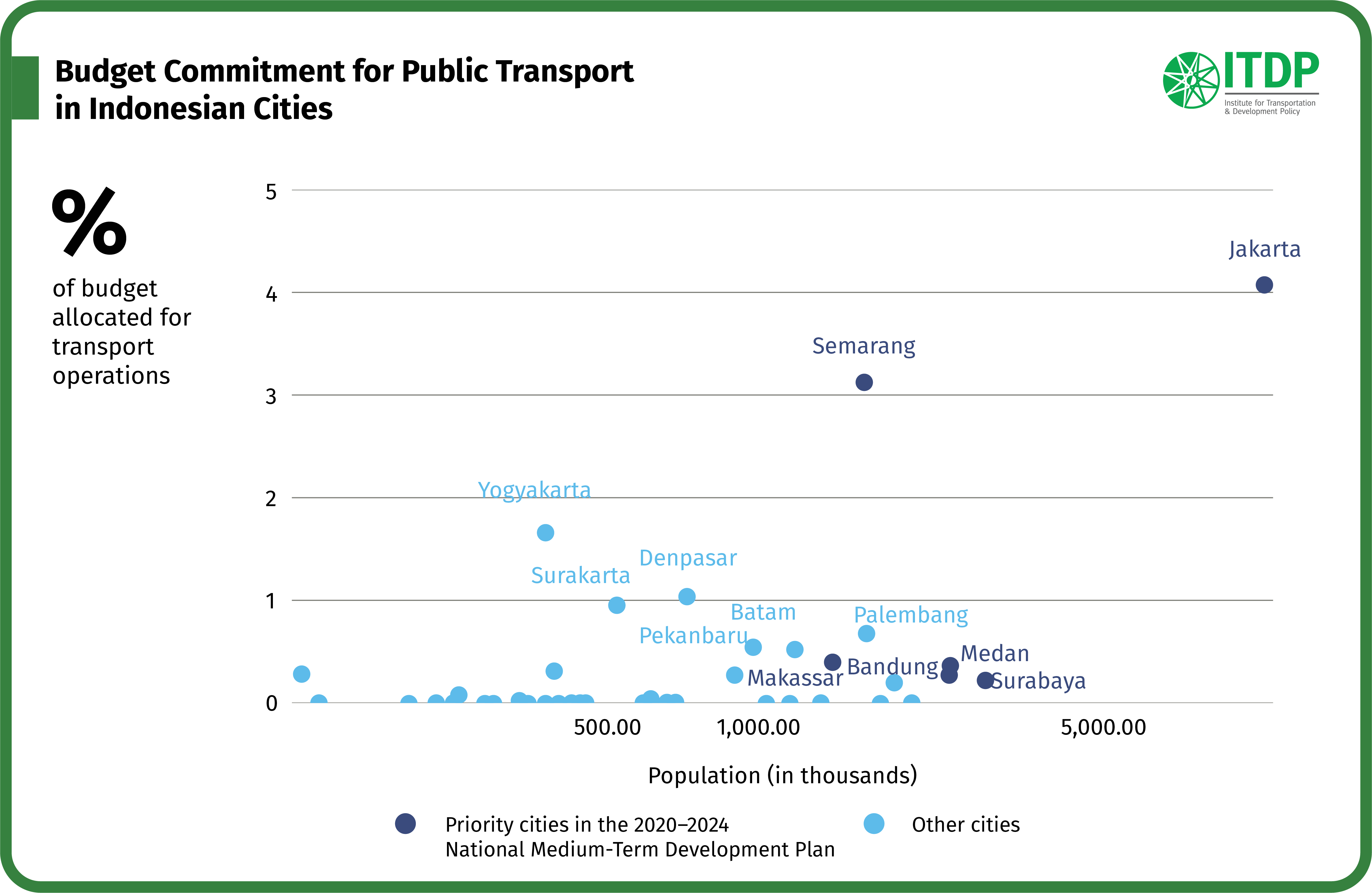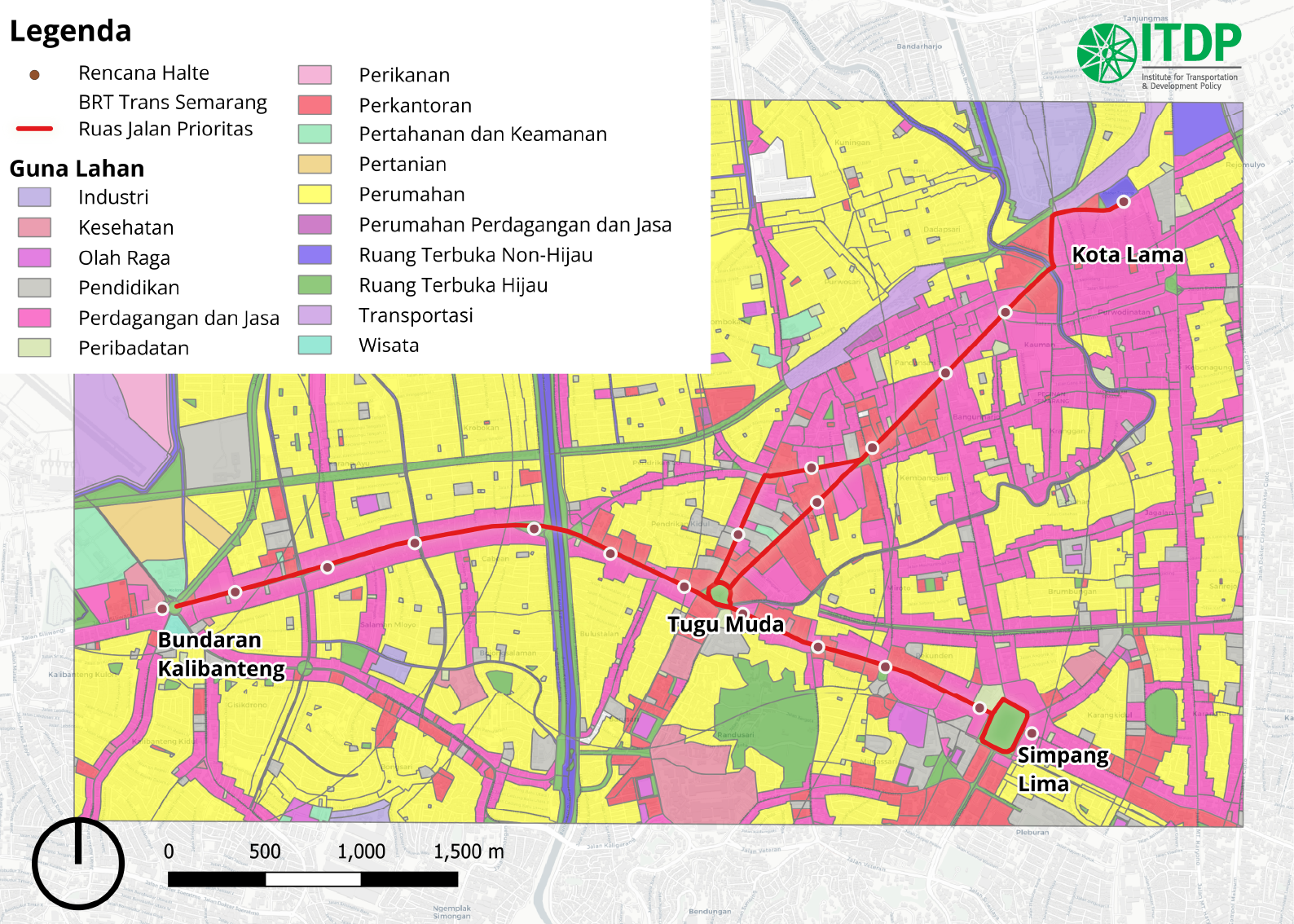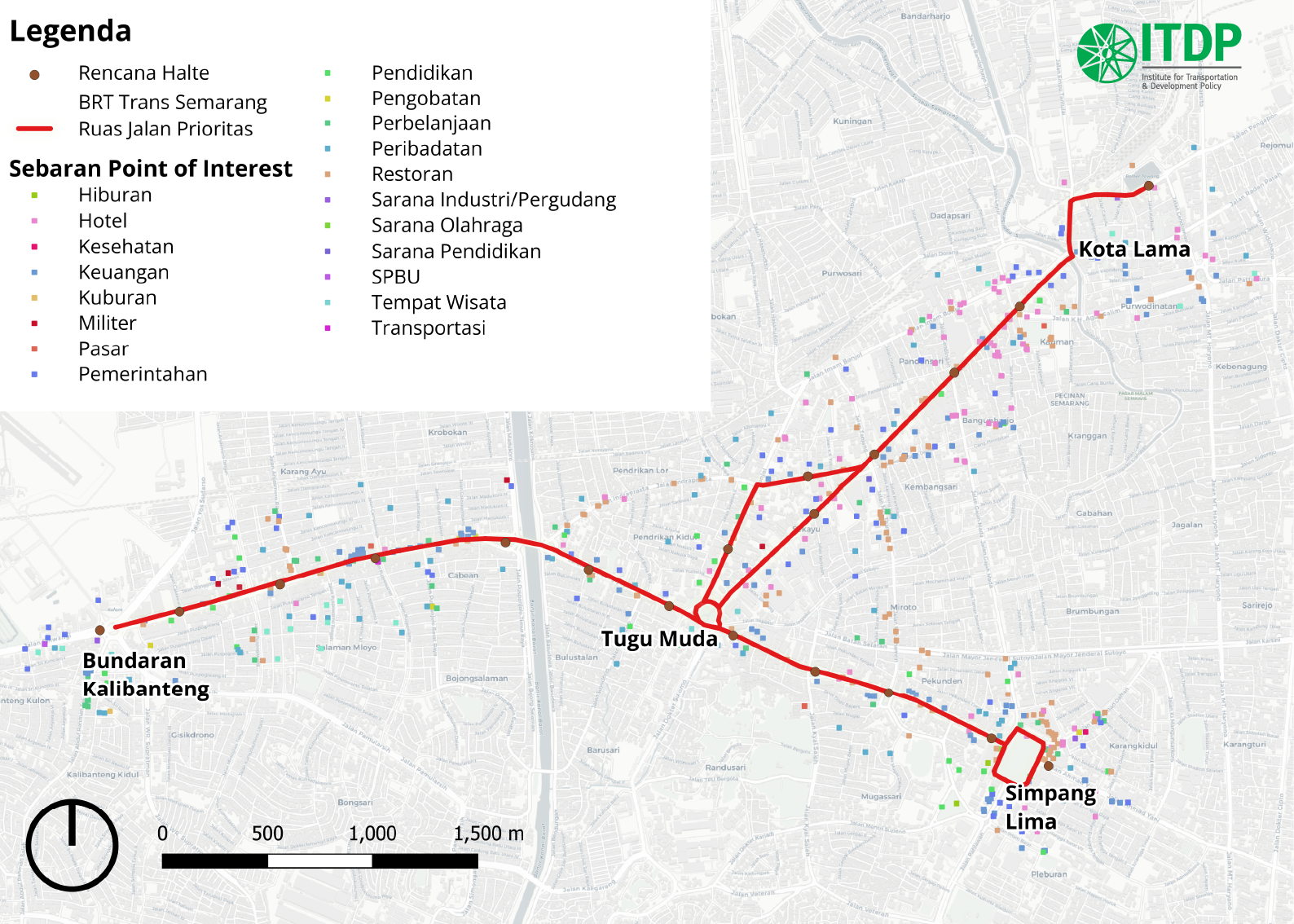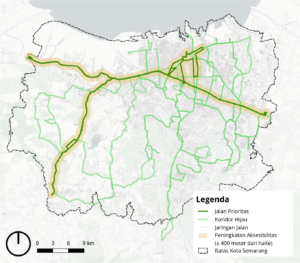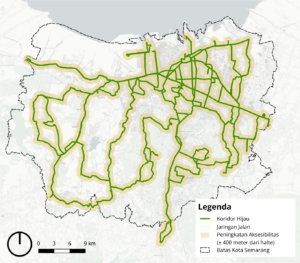February 10, 2025
Strengthening Semarang’s Commitment to Public Transport with Green Corridors
By Efod Zhet Mangontan, Transport Assistant ITDP Indonesia

Despite having a much smaller regional budget than Jakarta, Semarang has successfully developed a progressive public transportation system called Trans Semarang. In fact, by the end of 2024, the city reinforced its commitment by enacting Regional Regulation No. 11/2024 on Transportation Management, which mandates a minimum allocation of 5% of the city’s budget for public transport subsidies. However, Trans Semarang alone cannot solve congestion and air pollution; supporting policies must be developed to enhance its impact.
Launched in 2009, Trans Semarang has grown significantly from a single route—Mangkang–Penggaron—to serving eight main and four feeder routes.
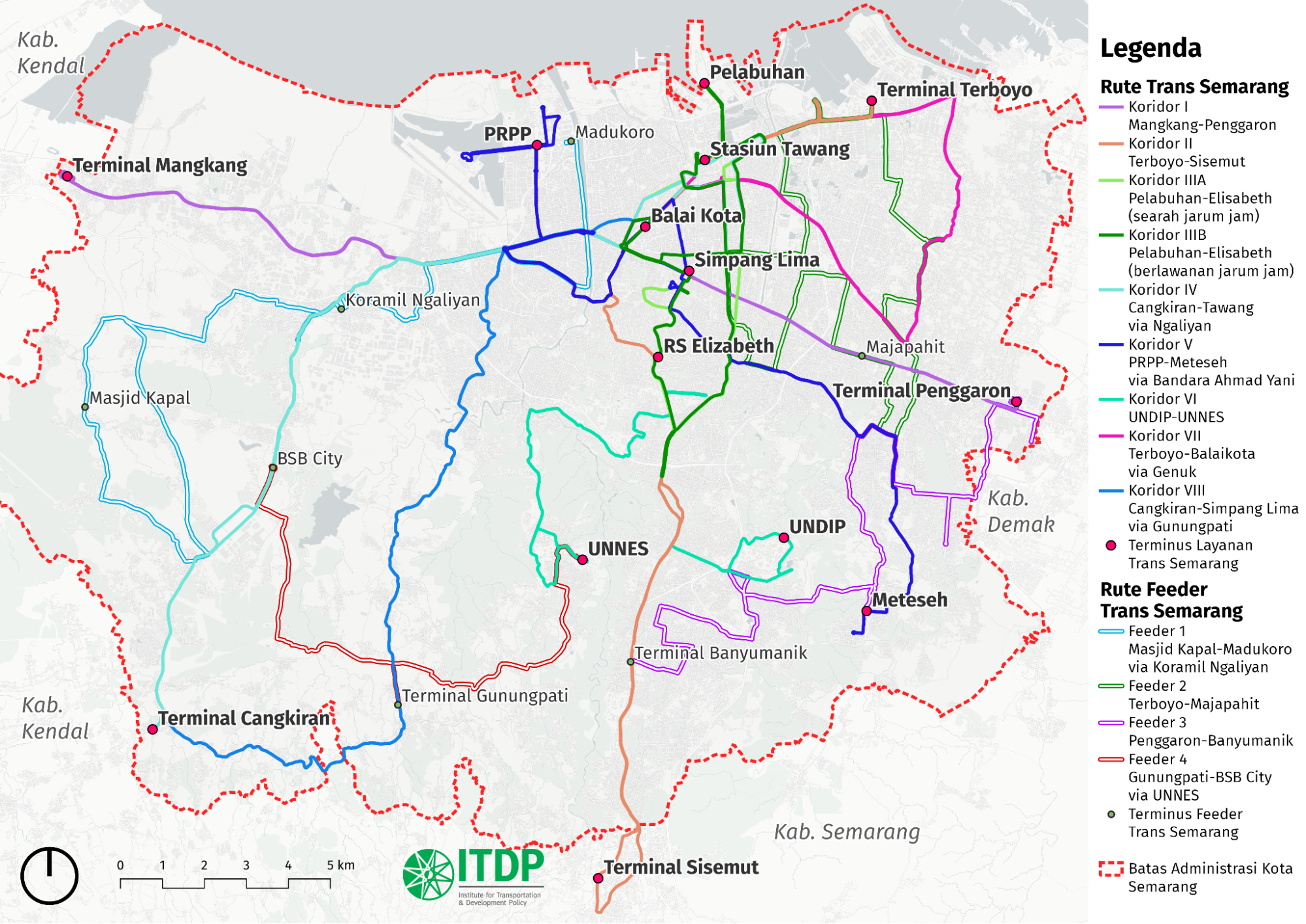
An increase in ridership has accompanied the improvements in Trans Semarang’s services. In 2022, Trans Semarang recorded 15.43 million trips, a 65.15% increase from 2021. By 2023, an average of 40,000 daily trips were made on Trans Semarang1. Furthermore, the city plans to develop a dedicated BRT (Bus Rapid Transit) corridor on the Mangkang–Penggaron route to enhance service capacity, quality, and coverage.
Despite the city’s goal to increase public transport’s mode share to 20% of daily trips by 20302, the figure stood at just 7% in 2020. This low ridership contributes to poor air quality, with greenhouse gas (GHG) emissions from the transport sector reaching 823,887 tons of CO2e in 20173.
One major challenge is the ineffective enforcement of private vehicle restrictions. Widespread illegal on-street parking, often cheaper than Trans Semarang fares, and underutilized off-street parking further discourage people from switching to public transport. Some restrictions, such as car-free days at Simpang Lima, car-free nights in Kota Lama, and heavy vehicle restrictions during peak hours (6:00–7:30 AM), are commendable steps. However, these measures need to be expanded and made permanent to encourage a shift toward more sustainable transport options.
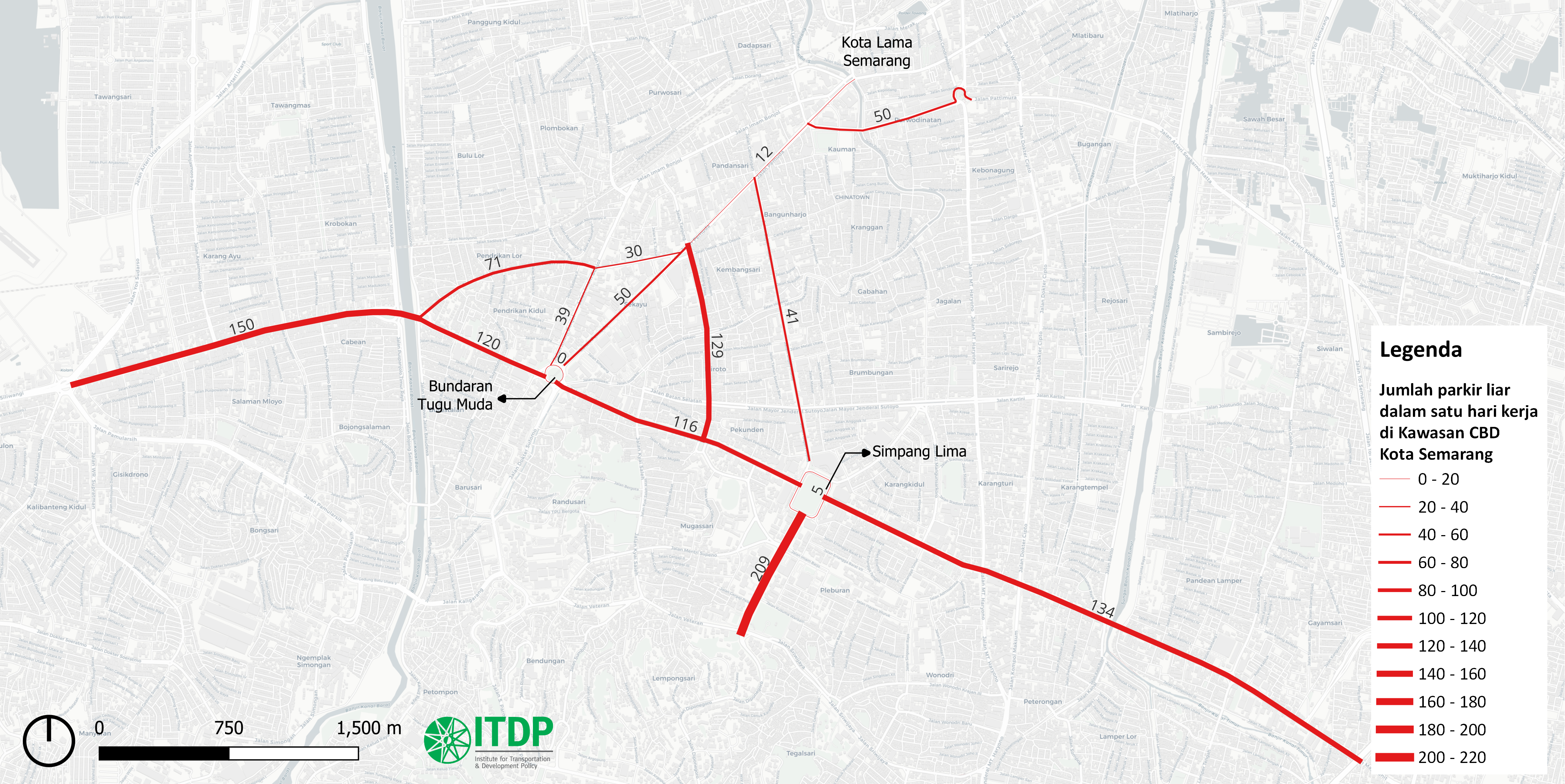
Public Transport Alone Is Not Enough
A common misconception in Indonesian cities is that simply providing public transport should be enough to solve congestion. Public transport must be part of a broader sustainable mobility strategy, which also requires better accessibility, inclusivity, and disincentives for private vehicle use. Unfortunately, implementation in many cities remains fragmented, leading to underutilized public transport services and eventual termination4.
A more effective approach is to start by developing priority transit corridors, a concept known as the Green Corridor. This model focuses on low-emission mobility within a designated area, using a combination of push and pull strategies to encourage people to shift to public and eco-friendly transport options. By concentrating on a limited area, cities can evaluate and refine policies before scaling them up.
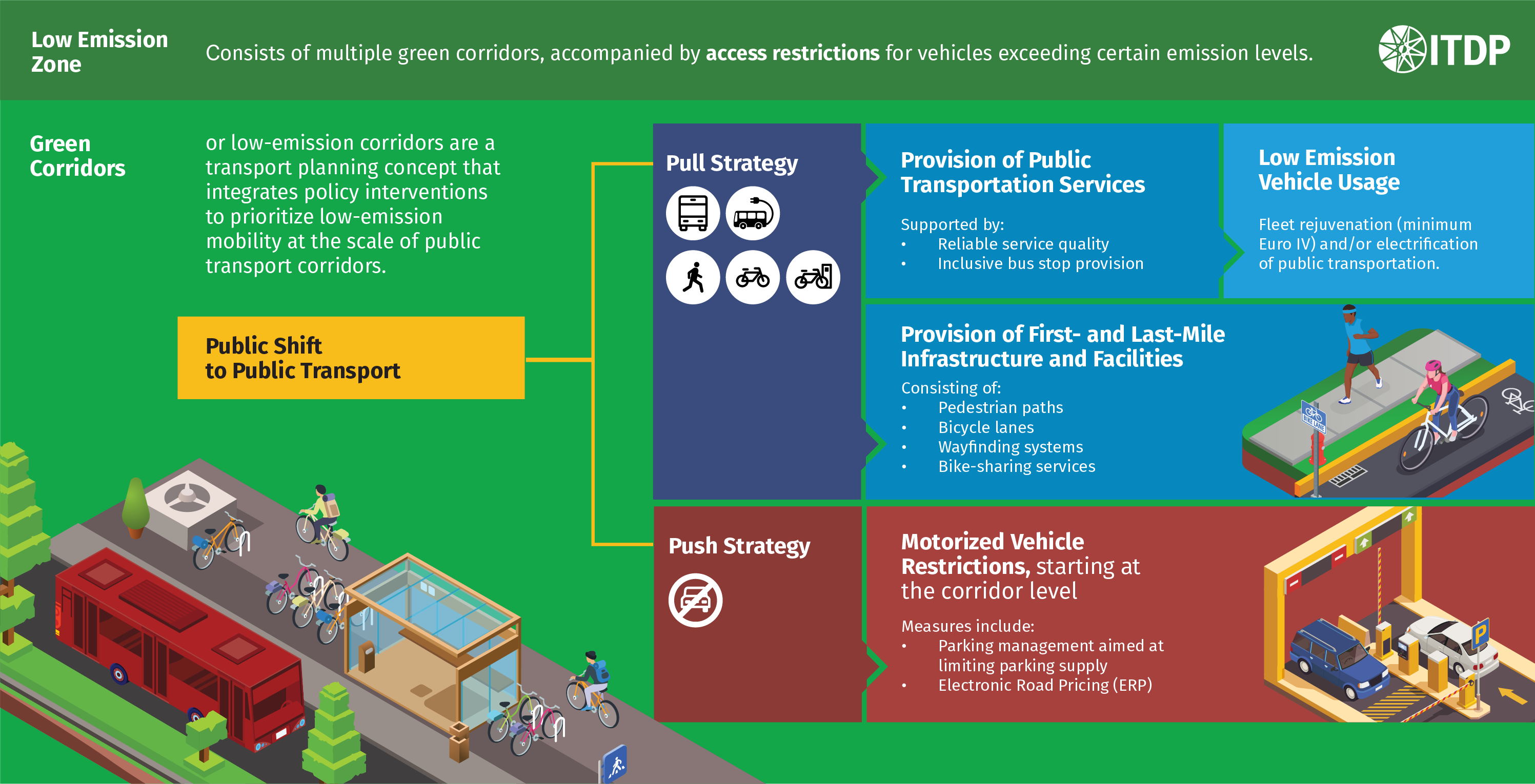
In the context of Semarang, ITDP Indonesia, with support from UK PACT, recommends piloting the Green Corridor concept on Trans Semarang’s Corridor I and IV. These routes were identified in a 2023 ITDP Indonesia study as prime candidates for electric bus pilot programs. The study found that adopting electric buses could cut greenhouse gas (GHG) emissions by up to 42.9%, equivalent to reducing 5,238 tons of CO2e per year compared to a business-as-usual scenario.

For implementation, Green Corridor interventions can start in specific target areas as a short-term priority. These priority areas serve as focal points for applying stricter push and pull strategies. The selection of priority road segments is based on key considerations, including:
- Overlap of Corridor I and IV Routes: These routes run through Semarang’s city centre and intersect with multiple transit corridors, improving overall connectivity.
- Planned Dedicated BRT Lanes: Around 60% of the priority routes align with Semarang’s proposed BRT lanes, supporting operations and encouraging public transport use.
- Diverse Land Use and High Concentration of Points of Interest (PoIs): As major activity hubs, initial interventions in these areas can improve accessibility and support urban mobility.
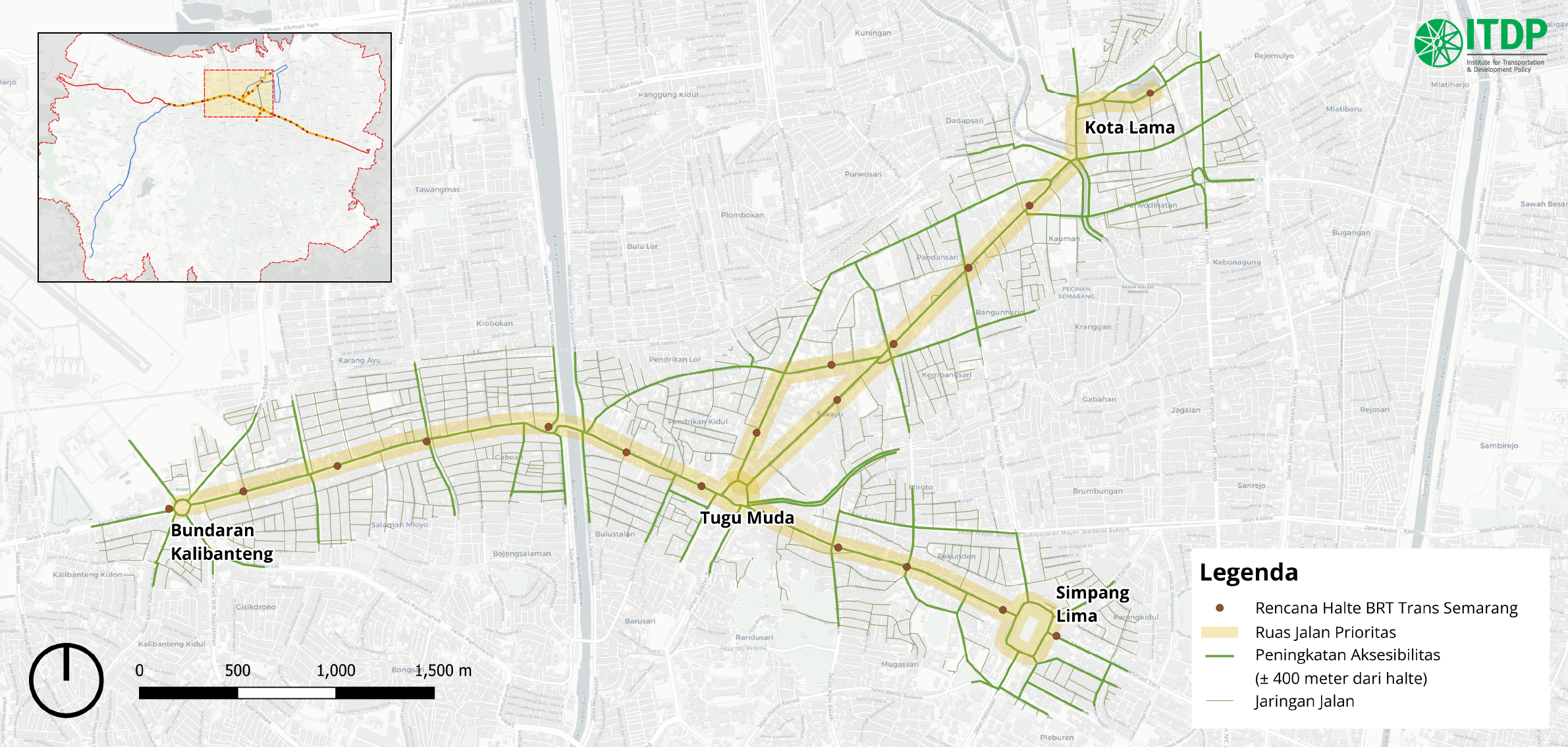
The Green Corridor development will be implemented in phases to ensure sustainability and long-term impact. ITDP Indonesia recommends the following three-phase approach:
| Phase | Characteristics |
| Short-Term:
Focus on the intersection of Trans Semarang Corridor I and Corridor IV
|
|
| Medium-Term:
Focus on the entire Corridor I and Corridor IV of Trans Semarang
|
|
| Long-Term:
Targeting all Trans Semarang corridors/routes
|
|
Implementing Green Corridors helps reduce congestion and air pollution. It reinforces Semarang’s commitment to sustainable transport, setting an example for other cities to create a more livable and environmentally friendly future.
The “Green Corridor Development in Semarang” study, conducted by ITDP Indonesia with support from UK Partnering for Accelerated Climate Transition (UK PACT), formulates the Green Corridor development concept, including priority locations and an action plan for policy implementation. Using a gap analysis approach to existing policies, the study aims to guide the Semarang City Government in determining strategic steps for Green Corridor development. Furthermore, this study serves as a reference for other cities in Indonesia to plan systematic and sustainable public transport systems, ultimately contributing to creating more livable urban environments.
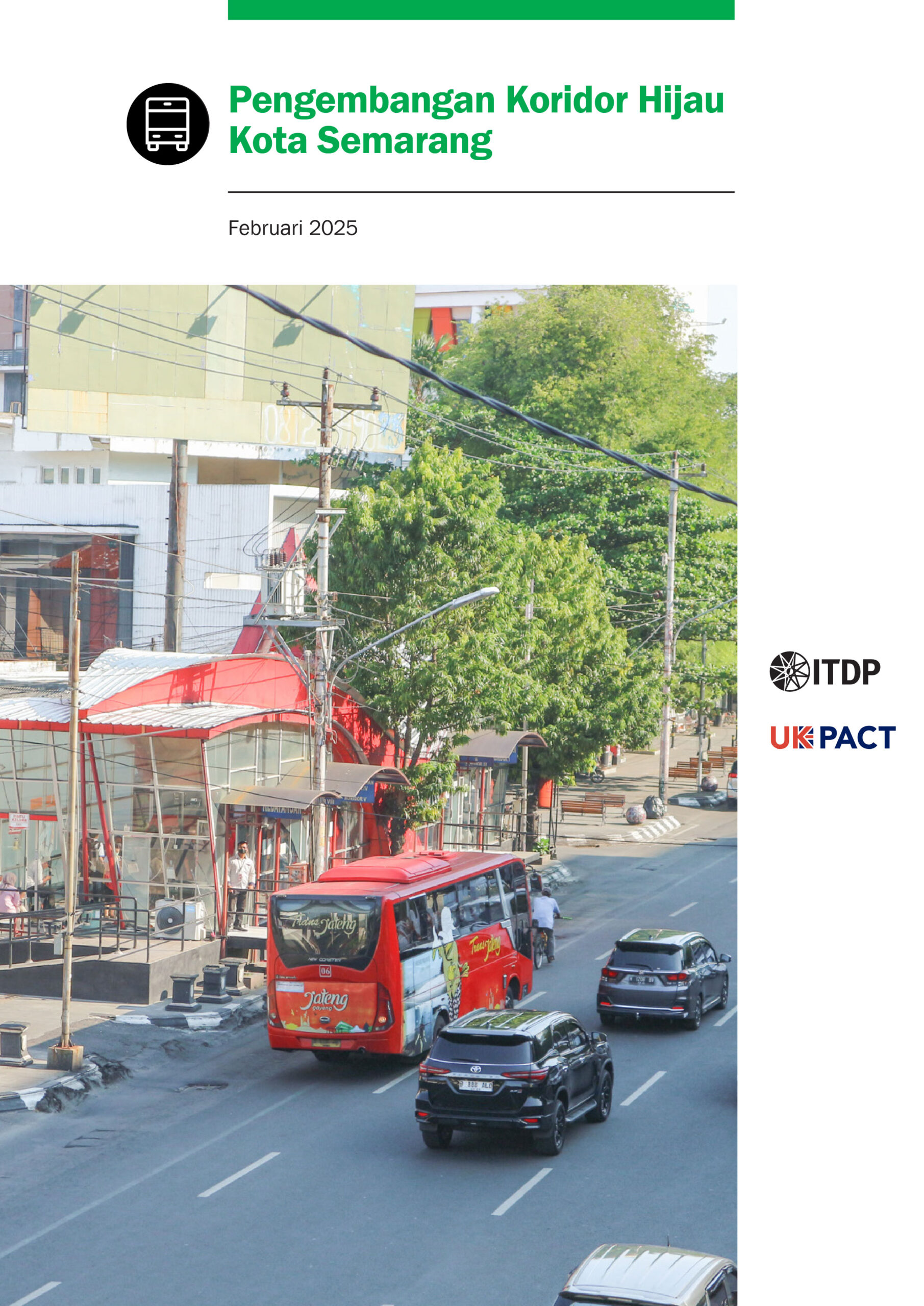
Referensi:
- PT Mitra Pembangunan Jaya. (2023). Pengkinian Studi Kelayakan Bus Rapid Transt Semarang. Laporan Akhir.
- PT Mitra Pembangunan Jaya. (2020). Low Emission Intefrated Mass Transit Plan (Urban Mobility Plan) Kota Semarang. Laporan Akhir.
- Dinas Lingkungan Hidup Kota Semarang. (2017). Kajian Inventarisasi Emisi Kota Semarang. Laporan Akhir.
- Dokumentasi Evaluasi Program Buy-the-Service Teman Bus di Indonesia

